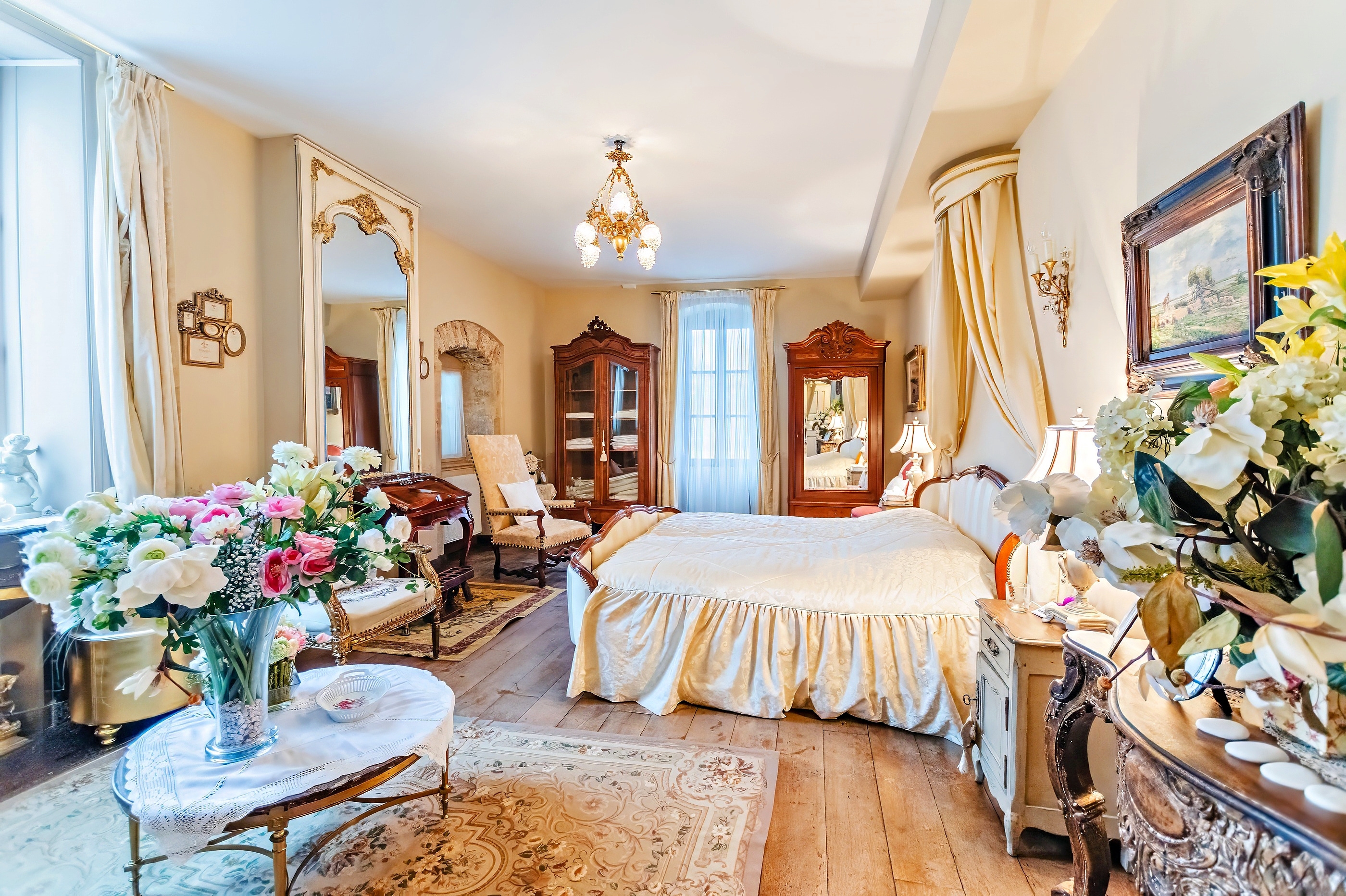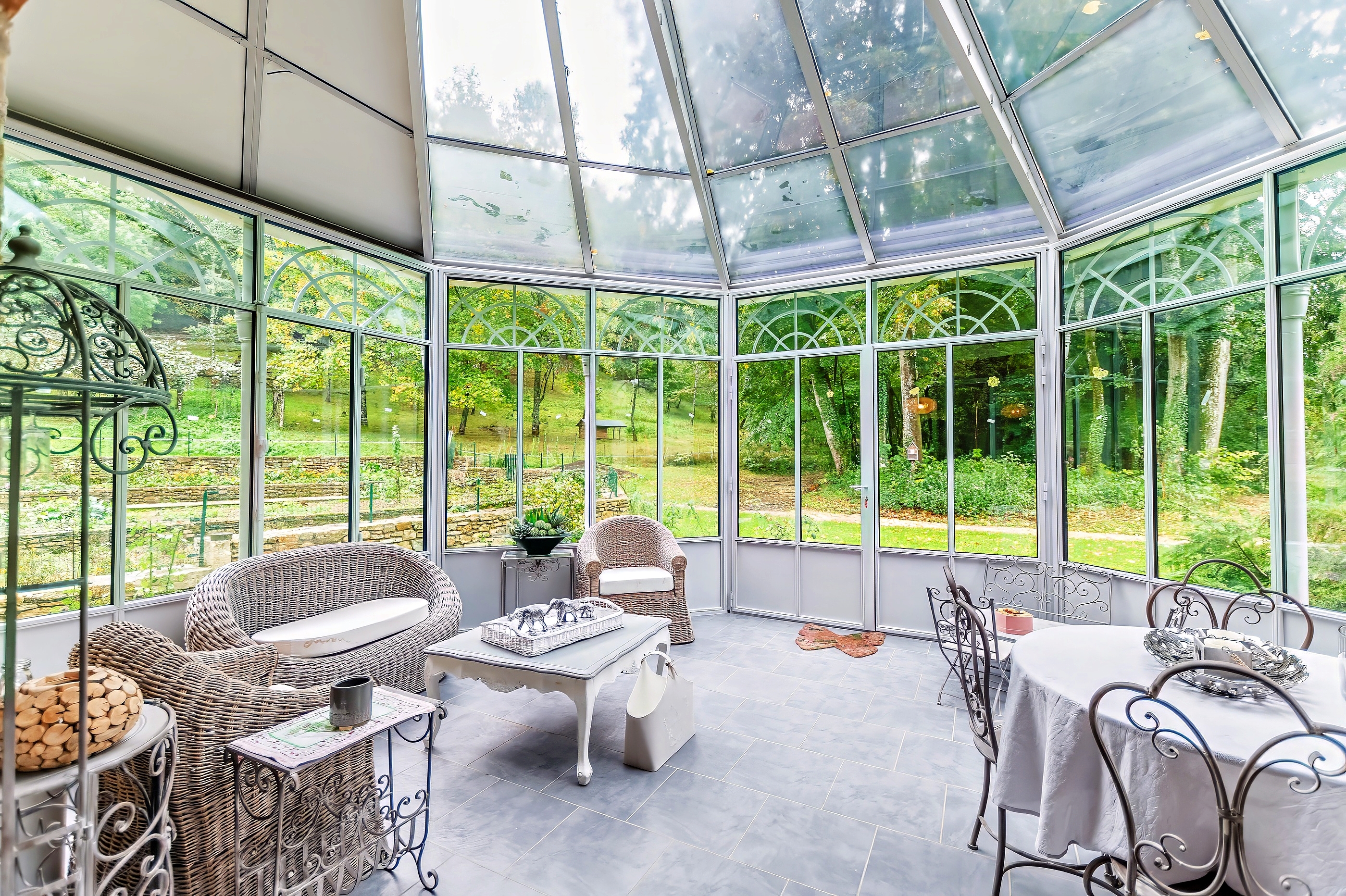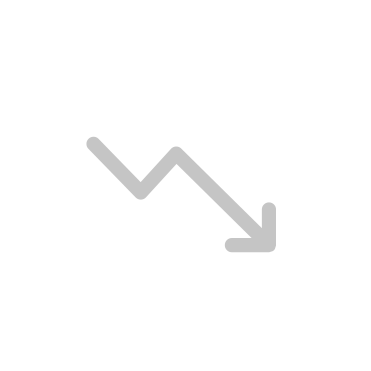Description
La Compagnie Immobilière du Léman vous présente ce château d'exception à taille humaine.
Niché au cœur de la pittoresque région de l'Ain, dans le village paisible de Saint-Jean-le-Vieux, le Château de Champollon s’impose comme une propriété d’exception où histoire et modernité cohabitent harmonieusement. Avec ses 780 m² habitables, ses dépendances élégantes, et ses 12 hectares de parc arboré, ce domaine offre un cadre unique, empreint de sérénité et de raffinement.
Un cadre enchanteur et pratique
Situé à 55 minutes de Lyon et à 1h20 de Genève, le château est aisément accessible tout en restant préservé des nuisances urbaines. À seulement 11 km de l’aérodrome d’Ambérieux-en-Bugey, il constitue un choix idéal pour les amateurs de déplacements rapides ou de voyages aériens. Le village offre toutes les commodités nécessaires : écoles, commerces variés, services médicaux, et accès facile à l’autoroute (8 km). La région est également riche en patrimoine culturel, avec des sites comme la cité médiévale de Pérouges, et en plaisirs gastronomiques avec de nombreuses tables étoilées.
Un château rénové avec soin
Construit au XVIe siècle, ce château a été méticuleusement restauré en 2001 avec un respect profond pour son histoire. Les éléments d’époque, tels que les sols en pierre, les parquets anciens et les plafonds à la française, s’allient à des équipements modernes pour un confort optimal. L’intérieur se compose de nombreuses pièces de vie chaleureuses : salons, salle à manger somptueuse, et une cuisine entièrement équipée avec cheminée. Les étages dévoilent 12 chambres et 6 salles de bains, chacune avec un cachet unique.
Un monte-charge dessert les niveaux supérieurs, tandis que l’escalier principal, chef-d’œuvre d’architecture, vous invite à parcourir ce lieu chargé d’histoire.
Des dépendances de charme
Outre le château, le domaine inclut :
Un parc exceptionnel
Le parc semi-clôturé, composé de prairies et de forêts, invite à la détente. Les infrastructures de loisirs incluent un court de tennis dissimulé dans la verdure et un bassin de détente chauffé avec nage à contre-courant. Les arbres centenaires ajoutent une ambiance sereine et majestueuse au domaine.
Caractéristiques techniques
Vivez l’expérience d’un lieu d’exception, alliant patrimoine et confort moderne. Ce château, idéal pour une résidence familiale ou une activité d’hébergement, attend ses nouveaux propriétaires pour continuer d’écrire son histoire.
Niché au cœur de la pittoresque région de l'Ain, dans le village paisible de Saint-Jean-le-Vieux, le Château de Champollon s’impose comme une propriété d’exception où histoire et modernité cohabitent harmonieusement. Avec ses 780 m² habitables, ses dépendances élégantes, et ses 12 hectares de parc arboré, ce domaine offre un cadre unique, empreint de sérénité et de raffinement.
Un cadre enchanteur et pratique
Situé à 55 minutes de Lyon et à 1h20 de Genève, le château est aisément accessible tout en restant préservé des nuisances urbaines. À seulement 11 km de l’aérodrome d’Ambérieux-en-Bugey, il constitue un choix idéal pour les amateurs de déplacements rapides ou de voyages aériens. Le village offre toutes les commodités nécessaires : écoles, commerces variés, services médicaux, et accès facile à l’autoroute (8 km). La région est également riche en patrimoine culturel, avec des sites comme la cité médiévale de Pérouges, et en plaisirs gastronomiques avec de nombreuses tables étoilées.
Un château rénové avec soin
Construit au XVIe siècle, ce château a été méticuleusement restauré en 2001 avec un respect profond pour son histoire. Les éléments d’époque, tels que les sols en pierre, les parquets anciens et les plafonds à la française, s’allient à des équipements modernes pour un confort optimal. L’intérieur se compose de nombreuses pièces de vie chaleureuses : salons, salle à manger somptueuse, et une cuisine entièrement équipée avec cheminée. Les étages dévoilent 12 chambres et 6 salles de bains, chacune avec un cachet unique.
Un monte-charge dessert les niveaux supérieurs, tandis que l’escalier principal, chef-d’œuvre d’architecture, vous invite à parcourir ce lieu chargé d’histoire.
Des dépendances de charme
Outre le château, le domaine inclut :
- Une maison de gardien (140 m²) : trois chambres, cuisine, et pièce de vie avec cheminée.
- Un cottage en pierres (72 m²) : idéal pour les invités avec trois chambres, séjour, et véranda antique.
- Une chapelle restaurée, ornée de fresques et d’objets de culte.
- Une serre, un poulailler, et une grange offrant encore un potentiel de personnalisation.
Un parc exceptionnel
Le parc semi-clôturé, composé de prairies et de forêts, invite à la détente. Les infrastructures de loisirs incluent un court de tennis dissimulé dans la verdure et un bassin de détente chauffé avec nage à contre-courant. Les arbres centenaires ajoutent une ambiance sereine et majestueuse au domaine.
Caractéristiques techniques
- Chauffage au fioul et bois, avec radiateurs en fonte.
- Huisseries en bois avec double vitrage.
- Raccordement à la fibre prévu.
- Bassin alimenté par pompe à chaleur.
- Système de vidéosurveillance et portail électrique.
- Raccordé au réseau collectif pour l’assainissement (tout-à-l’égout).
Vivez l’expérience d’un lieu d’exception, alliant patrimoine et confort moderne. Ce château, idéal pour une résidence familiale ou une activité d’hébergement, attend ses nouveaux propriétaires pour continuer d’écrire son histoire.
Details
Neighbourhood
- Village
- Green
- Shops/Stores
- Restaurant(s)
- Railway station
- Highway entrance/exit
- Tennis centre
- Hiking trails
- Religious monuments
Outside conveniences
- Garden
- Bench
- Quiet
- Greenery
- Annex
Inside conveniences
- Lift/elevator
- Guests lavatory
- Swimming pool
- Furnished
- Double glazing
Equipment
- Fitted kitchen
- Cooker/stove
- Oven
- Fridge
- Freezer
- Interphone
- Videophone
- Oversee camera
- Security guard
- Electric gate
- Outdoor lighting
Floor
- Antique parquet floor
Exposure
- Optimal
View
- With an open outlook
- Rural
- Garden
- Forest
Style
- Atypical house
Distances
Stores
5.53 km
1h42
-
10'
Restaurants
1.23 km
20'
20'
4'






















